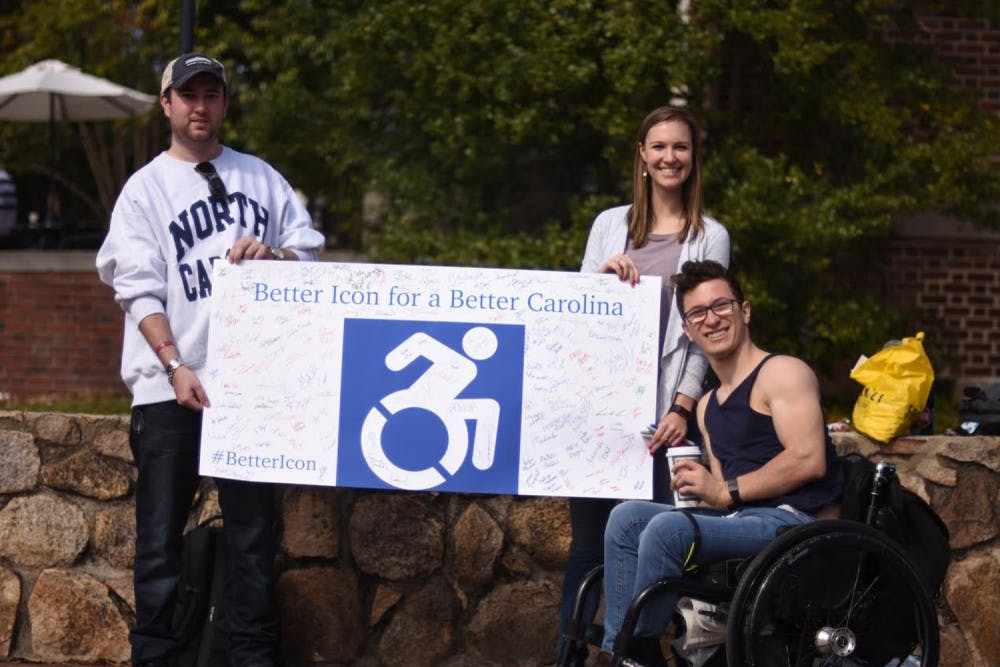The Alternative Symbol of Accessibility shows an active person with a disability, rather than the current accessibility symbol which shows a static person.
Senior Taylor Emory said the group of students have been working since October 2016 to bring the new signs to UNC’s campus.
“The whole purpose of the accessibility icon is to bring forth, you know, a new symbol, a new alternative to the current handicapped sign,” Emory said. “You know, the current handicapped sign is very immobile, upright and that symbol can create, you know, negative, implicit stereotype throughout certain people.”
Emory said the new accessibility icon would help to change the negative stereotypes of handicapped individuals by incorporating motions and independence.
The Alternative Symbol of Accessibility was introduced in 2010 and since then has spread through media campaigns and activism said Chris Corsi, another member of the committee. The sign has been officially adopted in New York and Connecticut.
“Hopefully with that momentum we can sort of carry it on here and contribute to that momentum,” Emory said.
By the end of the spring 2017 semester, the committee hopes to acquire the approval of University officials to adopt the Alternative Symbol of Accessibility on UNC’s campus. They hope to get funding from student government and other student fundraising resources, Corsi said.
“Starting with the Union, we are trying to implement and we are trying to take it to the Board of Directors and basically convince them to change the old accessibility icon to the new accessibility icon,” Marie Payne, another member of the campaign, said.



